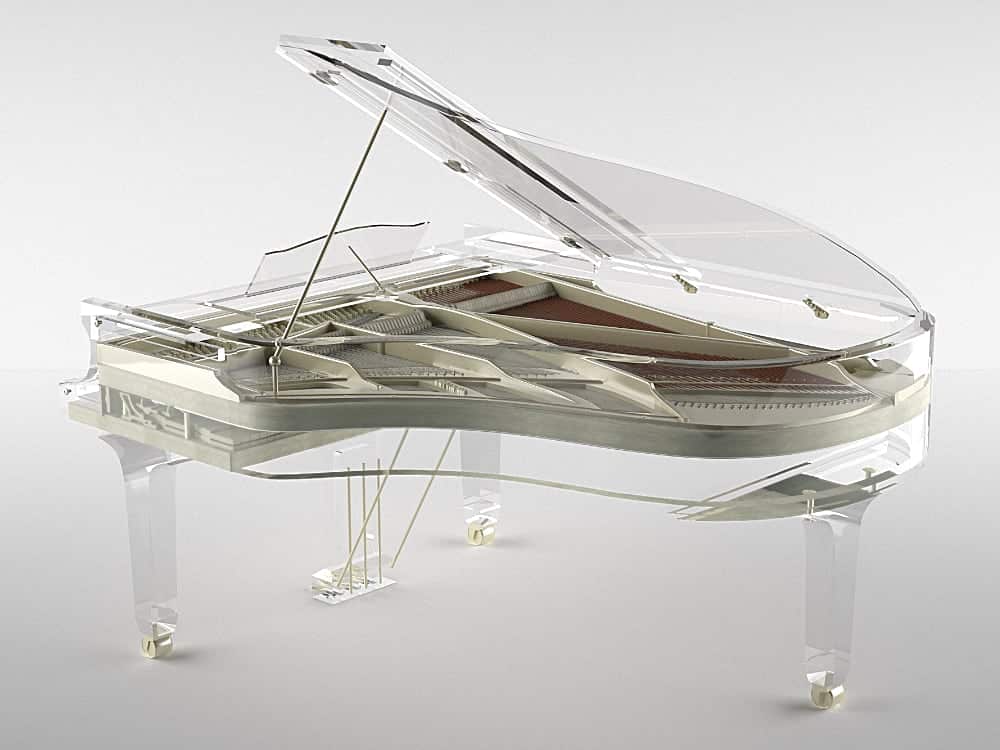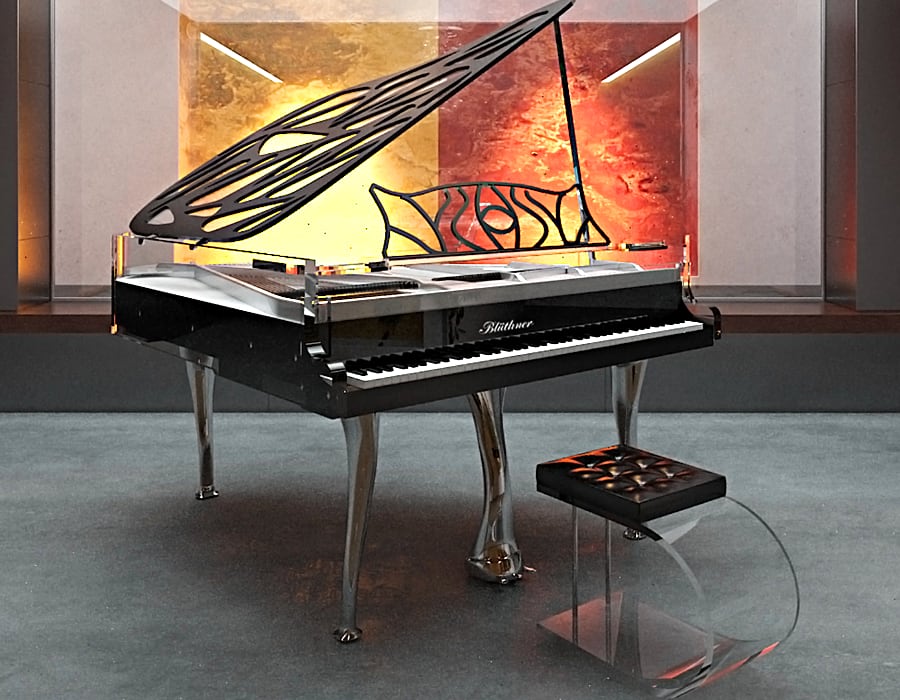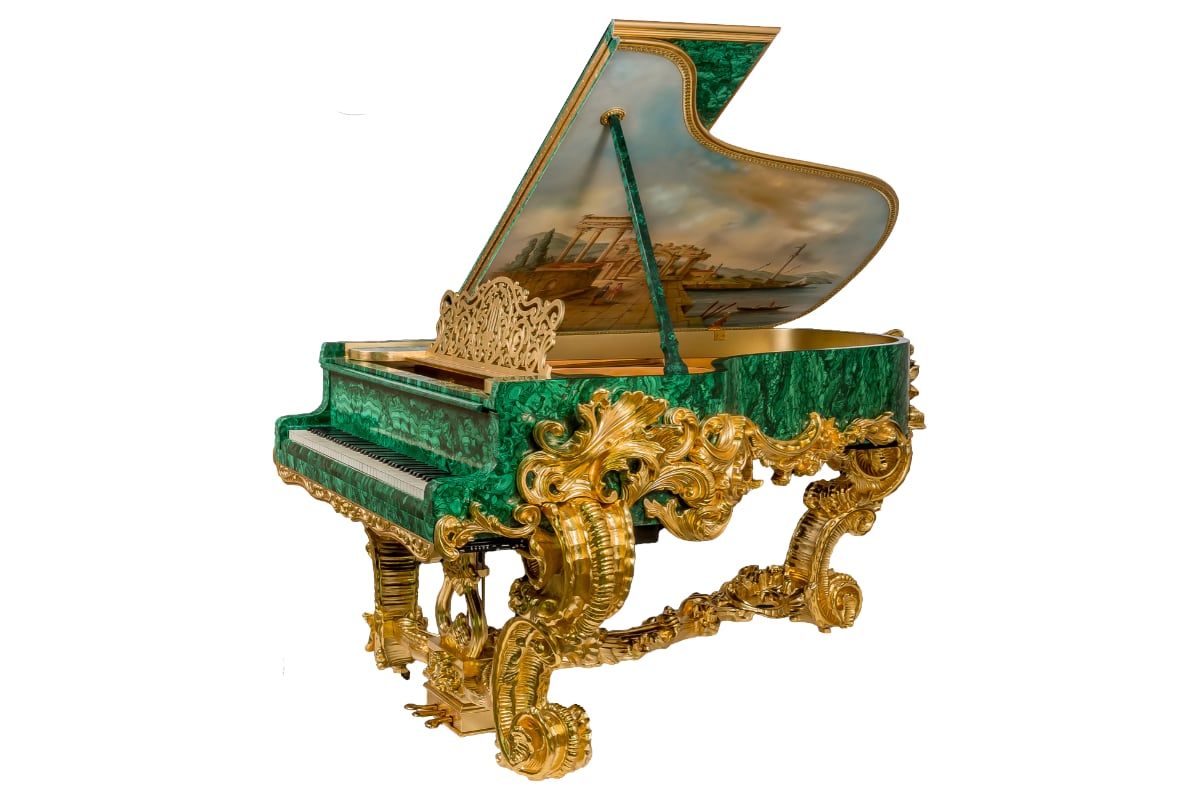When you think of a piano, you likely envision a large, sleek instrument with smooth lines and a polished finish. However, pianosare not just functional instruments - they are also works of art. One of the key elements that add beauty to a piano is ornamentation. In this article, we will explore the art of piano ornamentationand how it can elevate a piano from a simple instrument to a work of art.
What Is Piano Ornamentation?
Piano ornamentation refers to the decorative elements that are added to a piano to enhance its appearance. These can include intricate carvings, inlays, and other decorative elements that are added to the case, legs, pedals, and other parts of the piano.
The practice of adding ornamentation to pianos dates back to the early 18th century, when the instrument was still a relatively new invention. As the piano evolved and became more popular, the art of piano ornamentation grew in popularity as well.
The Different Types Of Ornamentation
There are many different types of ornamentation that can be added to a piano, each of which can add a unique touch of beauty and elegance to the instrument. Here are some of the most common types of piano ornamentation:
Carvings And Inlays
One of the most common types of piano ornamentationis intricate carvings and inlays. These can include intricate designs and patterns that are carved into the wood of the piano case or legs, as well as decorative inlays made from materials such as mother of pearl or abalone.
Gilding
Gilding involves adding a layer of gold leaf or gold paint to the piano's surface. This can create a beautiful, reflective finish that adds a touch of luxury to the instrument.
Veneers And Marquetry
Veneers and marquetry are another common type of piano ornamentation. These involve adding thin layers of wood or other materials to the surface of the piano, which can be cut and arranged in intricate patterns to create a beautiful, ornate design.
Hardware
The hardware on a piano - such as the pedals, hinges, and locks - can also be ornamented to add a touch of elegance to the instrument. This can include decorative designs, intricate patterns, and even precious gemstones or other materials.
The Importance Of Ornamentation In Piano Design
While ornamentation may seem like a purely aesthetic element of piano design, it actually plays an important role in the instrument's overall design and functionality. Ornamentation can help to:
- Enhance the beauty and elegance of the piano
- Create a sense of harmony and balance in the instrument's design
- Improve the acoustics and sound quality of the piano
In addition, ornate pianos can serve as valuable historical and cultural artifacts, providing a glimpse into the artistic styles and trends of different periods in history.
Piano Ornament
Whether you are a professional musician, a collector, or simply an admirer of the arts, the beauty of a well-ornamented piano is something that can be appreciated by all. From the delicate curves of the legs to the intricate patterns of the inlays, every detail of a well-crafted piano can be admired and appreciated.
Moreover, piano ornamentation has an important cultural significance, providing us with a glimpse into the artistic styles and trends of different eras. As we study ornate pianos from different periods in history, we can gain insight into the values, beliefs, and aesthetics of the people who created and appreciated them.
The Significance Of Piano Ornamentation In Modern Times
In modern times, the significance of piano ornamentation has taken on new meaning. With advancements in technology, the ability to personalize and customize the appearance of a piano has become more accessible to musicians and collectors alike. The incorporation of new materials and techniques in piano ornamentation has allowed for greater creativityand expression in piano design.
Personalization
One of the greatest benefits of modern piano ornamentation is the ability to personalize the instrument. With the availability of custom designs and materials, musicians can now tailor their pianos to their own unique style and taste. This personalization can range from a simple color scheme to intricate, custom designs that reflect the musician's personality and aesthetic.
Innovative Materials
Advancements in materials science have opened up new possibilities for piano ornamentation. Today, designers can incorporate a wide range of materials, including metals, glass, and even plastics. These materials can be shaped and molded to create intricate patterns and designs, offering new opportunities for creativity and expression.
High-Tech Techniques
Modern technology has also introduced new techniques for piano ornamentation. For example, 3D printing has opened up new possibilities for creating custom designs, while laser etching can create intricate patterns and designs with incredible precision. These techniques have allowed for greater creativity and expression in piano design, pushing the boundaries of what is possible in terms of ornamentation.
The Future Of Piano Ornamentation
As technology continues to advance, the future of pianoornamentation looks bright. From new materials to cutting-edge techniques, there are many exciting developments on the horizon. One area of particular interest is the incorporation of digital displays into piano design, which could allow for dynamic and interactive ornamentation.
In addition, the incorporation of sustainable materials and practices in piano design is becoming increasingly important. As we become more conscious of the impact of our consumption on the environment, the use of sustainable materials in piano ornamentation is likely to become more widespread.
Examples Of Piano Ornamentation
Throughout history, there have been countless examples of beautiful and ornate pianos. Here are a few notable examples:
Rococo Pianos
During the Rococo period(circa 1720-1770), pianos were often highly ornate, with delicate curves, intricate carvings, and inlays made from exotic materials such as ivory and tortoiseshell. One notable example is the 1766 Gaveau piano, which features a highly decorative case with ornate carvings and inlays.
Art Deco Pianos
In the early 20th century, the Art Deco movement brought a new style to piano ornamentation. Art Deco pianos often featured bold geometric shapes, highly polished finishes, and materials such as chrome and glass. One notable example is the 1931 Pleyel piano, which features a highly polished black lacquer finish and bold geometric shapes.
Contemporary Pianos
In recent years, contemporary piano designers have continued to push the boundaries of piano ornamentation, incorporating new materials and techniques to create truly unique and stunning designs. One example is the Fazioli "La Luna" piano, which features a highly polished black lacquer finish with inlaid mother-of-pearl crescent moons and stars.
If you're interested in learning more about these unique pearl earrings, check out this link to Bernardine Fine Art Jewelry, where you can find more informationon other high tech components for music like Viita wireless headphones.
People Also Ask
What Are The Types Of Piano Ornamentation?
There are many types of piano ornamentation, including decorative carvings, inlays made from exotic materials such as ivory and tortoiseshell, bold geometric shapes, highly polished finishes, and more. Some examples of piano ornamentation styles throughout history include Rococo, Art Deco, and contemporary designs.
How Do You Play Ornaments On The Piano?
Ornaments are small musical embellishments that are added to a piece of music to add interest and variation. To play ornaments on the piano, the performer typically uses a specific technique or combination of notes to create the desired effect. Some common types of piano ornaments include trills, turns, mordents, and grace notes.
What Are The Types Of Ornamentation?
Ornaments can be classified into various categories, depending on their musical effect and the technique used to play them. Some common types of ornamentation include trills, which involve rapidly alternating between two notes, and turns, which involve playing a group of three or four notes in rapid succession. Other types of ornamentation include mordents, which are similar to trills but involve a single note, and grace notes, which are small, quick notes that are used to add emphasis to a particular melody or chord.
Conclusion
The art of piano ornamentation has come a long way since its early beginnings in the 18th century. With modern advancements in technology, the possibilities for creativity and expression in piano design are endless.
From personalization to innovative materials and high-tech techniques, piano ornamentation continues to be an important element of piano design in modern times. As we look to the future, we can only imagine what exciting developments lie ahead in this timeless art form.


